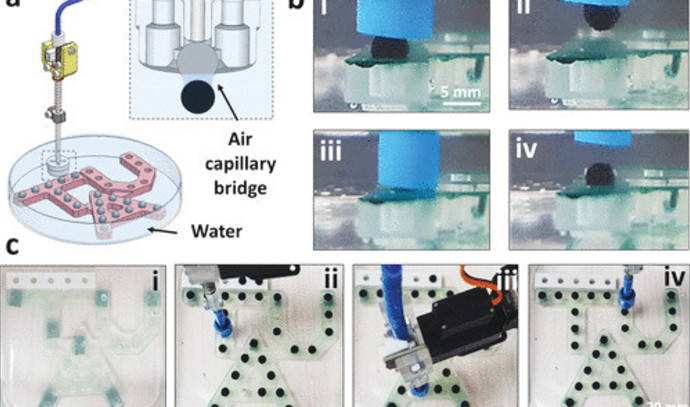According to a study at Tel Aviv University, state-of-the-art technology will allow marine robots to pick up tiny objects smaller than a millimeter for the first time.
In the study, the researchers built a robotic arm with a special head printed on a 3D printer, which can be used to automate experiments with biological cells in an aquatic environment.
The study was led by Dr. Bat El Pinhasik, a senior faculty member at the School of Mechanical Engineering at the Ivy and Elder Fleischman Faculty of Engineering, with her students in the Biomimetics Laboratory of Mechanical and Surface Systems. The study was published in the prestigious journal ACS Applied Materials & Interfaces.
The researchers explained that underwater many insects are aided by tiny bristles that allow them to trap and stabilize water-repellent air bubbles that cover their bodies. When these bubbles come in contact with surfaces, they form bridges made of air that allow insects to go underwater.
The study was able to mimic the mechanism for lifting and placing many small and light objects (on the order of a millimeter and even less) that cannot be lifted and released in any other way. These objects include thin sheets, perforated or rough surfaces, tiny particles in various shapes and dirt.
Dr. Pinhasik said: “We have been able to mimic the principle of action of insects and translate it into a controlled mechanical process that can be technologically applied. As far as is known, there is no gluing or gripping mechanism capable of performing all of these operations on such a large variety of particles and tiny objects. “In this study there is no use of chemicals, so in cases where infections are a significant risk, such as in medical procedures or biological experiments, the robotic arm is able to clean the liquid work environment of polluting particles – something that can not be done by conventional robotic arms.”
She added: “We are interested in systems in nature, especially in insects, to be inspired by the development of small robotic systems. To that end, the group has mechanical engineering, biomedical engineering, materials engineering and physics – which gives us a great advantage in finding unconventional ideas and creative solutions. “Indeed, in this case, we were able to think outside the box.”
